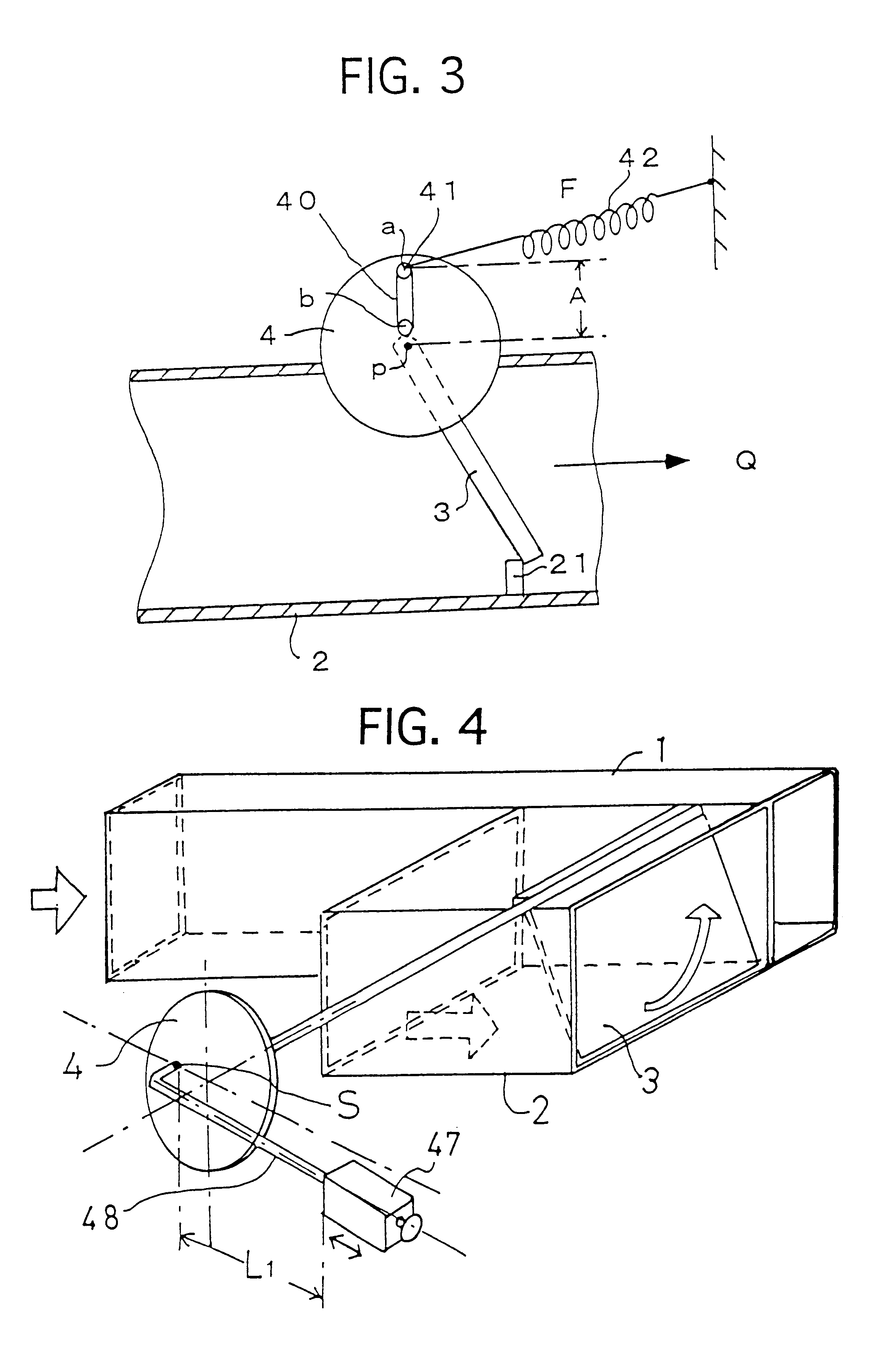Intake duct
a technology of intake duct and intake air, which is applied in the direction of combustion engine, combustion air/fuel air treatment, charge feed system, etc., can solve the problems of increased space needed, offensive to motor vehicle passengers, and inconvenient operation of the intake system
- Summary
- Abstract
- Description
- Claims
- Application Information
AI Technical Summary
Problems solved by technology
Method used
Image
Examples
embodiment 1
(Embodiment 1)
FIG. 1 is a diagram explaining an intake duct of one exemplary embodiment. As shown, a first intake passage 1, with a small diameter, and a second intake passage 2 with a diameter greater than that of the first intake passage 1 are joined to define the collective intake duct. In FIG. 1, the junction of the first intake passage 1 and second intake passage 2 is not illustrated.
The cross-sectional area of the first intake passage 1 is equal to that of a pipe of .O slashed.40, and the cross-sectional area of the second intake passage 2 is equal to that of a pipe of .O slashed.70. The distance between an open end of the first intake passage 1 and the junction between the two intake passages is made longer than that between an open end of the second intake passage 2 and the same junction. A valve member 3 is pivotably mounted on a wall defining part of the second intake passage 2.
A cam 4, having a disk-like configuration, is connected at its center to a pivot shaft of the va...
embodiment 2
(Embodiment 2)
FIG. 4 illustrates a second embodiment of an intake duct in accordance with the present invention. The intake duct of the present embodiment differs from that of Embodiment 1 in that spring 42 used in Embodiment 1 is replaced with a weight 47 having a weight equal to W.
More specifically, the pivot shaft of valve 3 is still connected to the center of a cam 4 as in, Embodiment 1. One end of a rod 48 is secured to cam 4 at a fixed point (S) offset from the center (P) thereof, and weight 47 is attached to rod 48 so as to be movable thereon. In the present embodiment, the fixed offset point (S) defines a point of action.
The intake duct of the present embodiment has the arrangement that, when valve 3 fully closes the second intake passage 2, the end of rod 48 is located slightly downwardly from its horizontal position, as illustrated in FIG. 4, and the weight 47 is retained of the end of rod 48 such so that the distance "L" between weight 47 and fixed point (S) becomes the m...
embodiment 3
(Embodiment 3)
In the preceding embodiments, cam 4 used has a disk-like configuration and is secured to the pivot shaft of the valve 3, which is a conceptual arrangement. Practically, as shown in FIG. 5, a sector-shaped cam 4 is provided on one of the side walls defining the second intake passage 2 integrally with a valve 3, and one end of a spring 42 is secured to a wall partly defining the second intake passage 2. In this present embodiment, since cam 4 pivots with valve 3, torque is directly transmitted to cam 4 from valve 3. This arrangement eliminates looseness between the parts, and consequently, disadvantages such as operation lag are prevented. Furthermore, the number of parts is decreased so that production costs are reduced.
With the arrangement illustrated in FIG. 6, wherein a sector-shaped cam 4 is provided on each of side walls defining the second intake passage 2, and a spring 42 is provided in each cam 4, the pivotal movement of a valves can be more accurately controlle...
PUM
 Login to View More
Login to View More Abstract
Description
Claims
Application Information
 Login to View More
Login to View More - R&D
- Intellectual Property
- Life Sciences
- Materials
- Tech Scout
- Unparalleled Data Quality
- Higher Quality Content
- 60% Fewer Hallucinations
Browse by: Latest US Patents, China's latest patents, Technical Efficacy Thesaurus, Application Domain, Technology Topic, Popular Technical Reports.
© 2025 PatSnap. All rights reserved.Legal|Privacy policy|Modern Slavery Act Transparency Statement|Sitemap|About US| Contact US: help@patsnap.com



